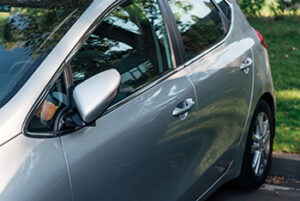
Nowadays it’s common for people to have a side job to supplement their steady income. There are many creative ways to do this, from freelance writing to computer programming to driving for ride share companies like Uber and Lyft.
However, landlords that are faced with applicants who list Uber or Lyft as a source of income may not have any idea how to proceed or how to verify that income.
Are Uber and Lyft a Legitimate Source of Income?
Uber and Lyft arrange for drivers with their own cars to connect with people that need a ride somewhere. Anyone over the age of 21 with a valid driver’s license and an insured 4-door vehicle can participate. In urban areas, Uber and Lyft drivers are generally busy all day while more rural areas may have fewer opportunities.
Ride share drivers can also focus on the busiest times of the day when people might need a car for hire. This usually includes the morning commute, the afternoon commute, during large conventions, music events, to and from big events, at bar closings and to and from the airport.
Some drivers have Uber and Lyft as their primary source of income, while others may only do it as needed or on a very part-time basis. The companies themselves are legitimate, and it should be no problem for applicants to show what kind of income they are making from their work there.
Advantages of renting to a Lyft or Uber driver?

To be an Uber driver you must have a clean driving record and pass a background check.
Now, that background check most likely does not focus on things such as evictions or liens, but it’s still a sign that the person had a clean history in order to gain employment.
Imagine if a driver did something awful to a passenger and it comes out that they have a serious criminal background. This is why both Uber and Lyft run background checks to reduce their liability.
How to Verify Uber and Lyft as a Source of Income
Verifying the income for such a job is similar to those who might freelance for a living or earn commissions. Because there is no set salary, however, it makes landlords quite nervous to sign a lease with such a person. One way to verify the income from an Uber or Lyft gig is to ask for the last two years of taxes. that way, landlords can get an average of the earnings to see how much weight they should give it in the application process.
Other ways to verify the income from a ride share gig is to ask for the last few months of pay stubs or payouts from Uber or Lyft. This gives landlords a way to see the average monthly earnings that the applicant is getting.
RentPrep’s Take On What to Do When Tenant Applicants List Uber or Lyft as a Source of Income
Landlords should always make sure that the applicant’s income is 3 times the rental amount. Adding in income from Lyft or Uber can help make the ratio more favorable. Some landlords don’t want to count income that isn’t a salary. Others will only count income from a full time job. Still others have no problem with it.
As long as the landlords goes through all the standard background checks and verifies that the income from all sources meets their rent to income ratio, there’s no reason to reject an applicant. However, if the applicant’s background and income check doesn’t meet the screening criteria, the landlord should pass.
What Are Other Landlords Saying About Applicants Who List Uber or Lyft as a Source of Income
Every landlord needs to protect their rental business, and confirming income is an important part of the background check. Thorough tenant screening is the best way to ensure that quality tenants are in place. Applicants that list Uber or Lyft as a source of income should go through the same process as those with any other traditional job.
Here’s a screenshot of landlords discussing this question in our private Facebook group for Landlords.
 You can see even more comments on that post by checking it out in the group.
You can see even more comments on that post by checking it out in the group.

